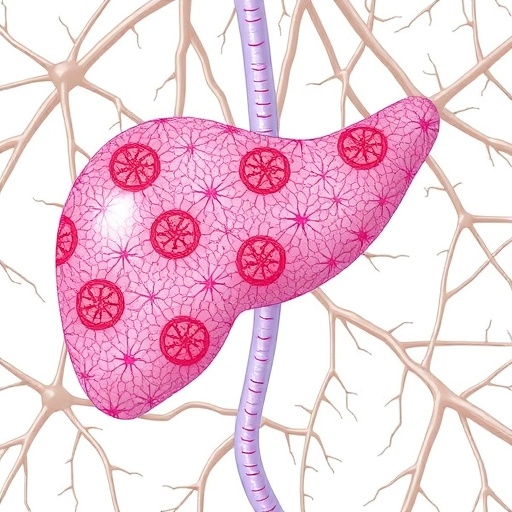A groundbreaking study has unveiled a 4,000-year-old genome of Yersinia pestis — the infamous plague bacterium — extracted from the remains of a domesticated sheep at the Bronze Age pastoralist site of Arkaim in the Eurasian Steppe. This remarkable discovery challenges existing theories about the origins and transmission pathways of prehistoric plague lineages and sheds new light on the complex interplay between humans, livestock, and wildlife in the spread of one of history’s deadliest zoonotic diseases.
For decades, the Late Neolithic Bronze Age (LNBA) plague lineage of Y. pestis has baffled researchers due to its genetic divergence from later historic strains, particularly its absence of the molecular machinery that enables flea-borne transmission. Until now, this enigmatic lineage was known solely from ancient human remains scattered across Eurasia. The identification of the LNBA Y. pestis genome in sheep marks a significant leap forward, suggesting that livestock—not just humans—played a critical role in the dissemination of this pathogen thousands of years ago.
The archaeological context of Arkaim, a fortified settlement tied to the Sintashta-Petrovka culture, provides a unique backdrop for this investigation. This community is recognized for its advanced herding techniques, including innovations in the domestication and management of cattle, sheep, and horses over vast pasturelands. With no evidence of grain storage facilities that might attract flea-bearing rodents, the site allowed researchers to explore alternative reservoirs and transmission vectors of the plague bacterium beyond the classic rat-flea-human cycle known from later pandemics.
.adsslot_dB16xiQNrl{ width:728px !important; height:90px !important; }
@media (max-width:1199px) { .adsslot_dB16xiQNrl{ width:468px !important; height:60px !important; } }
@media (max-width:767px) { .adsslot_dB16xiQNrl{ width:320px !important; height:50px !important; } }
ADVERTISEMENT
Genomic comparisons reveal that the Y. pestis strain infecting the sheep was nearly identical to the strain recovered from a human at a nearby contemporaneous site. This close genetic match strongly suggests that both species were infected through spillover events originating from a currently unknown wild animal reservoir. The data indicate that sheep grazing habits, which brought these animals into closer contact with wild fauna, likely increased the risk of zoonotic transmission to humans, providing a crucial epidemiological link previously overlooked.
This study also highlights the evolutionary pressures acting on the prehistoric plague lineage. The detection of repeated, independent mutations in specific gene subsets suggests adaptations associated with spillover events rather than sustained human or livestock infections. This contrasts with modern strains that exhibit broader genetic diversity linked to prolonged transmission cycles involving various hosts. Such findings underscore the crucial role of the unknown wildlife reservoir in maintaining and disseminating the pathogen during this ancient period.
The discovery prompts broader reflections on how animal domestication and pastoralist lifestyles shaped the epidemiology of infectious diseases. The Bronze Age witnessed significant transformations in human-animal relationships, characterized by intensified livestock herding, mobility, and ecological interactions at landscape scales. These changes likely amplified contact rates among humans, domestic animals, and wild reservoirs, fostering the emergence and spread of zoonotic pathogens such as Y. pestis.
Despite these advances, many questions remain unresolved. Chief among them is the precise identity of the wild animal reservoir responsible for seeding infections in both humans and livestock. The broad geographic and temporal distribution of genetically similar plague strains suggests a reservoir species capable of spanning vast regions, yet remains elusive to modern science. Future explorations integrating archaeological, palaeogenomic, and ecological methods will be essential to uncover this missing link.
Furthermore, the mechanisms underlying the rapid and extensive dispersal of the LNBA plague lineage challenge conventional assumptions. The distances between contemporary infected sites often exceed the travel capabilities of sick humans or terrestrial animals, pointing towards complex transmission networks possibly involving migratory wildlife or other ecological vectors. These enigmatic dynamics offer fertile ground for multidisciplinary research into prehistoric disease ecology.
The identification of Y. pestis in ancient livestock also heralds a new frontier in paleopathology, emphasizing the untapped potential of archaeological animal remains for understanding past pathogen evolution. Tens of thousands of animal bones excavated from prehistoric sites worldwide await systematic molecular screening, promising to revolutionize our understanding of ancient epidemics and their socio-environmental contexts.
Dr. Ian Light-Maka, lead author on the study, emphasizes this methodological breakthrough: “While human samples have overwhelmingly dominated ancient pathogen research, livestock remains afford an unparalleled window into the broader zoonotic landscape. This discovery in sheep challenges the anthropocentric narrative and compels us to rethink the ecology of ancient diseases.”
Echoing this sentiment, Dr. Felix M. Key, senior author and lab head at the Max Planck Institute for Infection Biology, underscores the evolutionary insights gained: “The patterns of natural selection we observe in this ancient strain are strikingly distinct from those seen today. It spotlights a plague lineage under strong evolutionary constraints, isolated from the dynamic flux characteristic of modern epidemics. Yet, the reservoir sustaining these ancient spillovers remains a tantalizing enigma.”
This landmark research, published in Cell, not only elucidates previously obscure aspects of plague evolution but also enriches our understanding of the intersection between human cultural practices and infectious disease emergence. It exemplifies how integration of archaeogenetics with rigorous evolutionary biology can unravel the deep-time narratives of pathogens that have shaped human history.
As researchers continue to mine the archaeological record for pathogen DNA, the narrative of prehistoric plagues promises to unfold with greater clarity and complexity. These insights are not merely academic; they inform current frameworks of zoonotic spillover, disease ecology, and global health preparedness in our increasingly interconnected world.
Subject of Research: Evolutionary genomics and zoonotic origins of the prehistoric Yersinia pestis plague lineage.
Article Title: Bronze Age Yersinia pestis genome from sheep sheds light on hosts and evolution of a prehistoric plague lineage
News Publication Date: 11-Aug-2025
Web References: 10.1016/j.cell.2025.07.029
Image Credits: © Björn Reichhardt
Keywords: ancient DNA, plague, Yersinia pestis, zoonotic diseases, Bronze Age, livestock, prehistoric epidemics, archaeogenetics, Eurasian Steppe, Sintashta culture, evolutionary biology, pathogen evolution
Tags: ancient disease pathwaysArkaim archaeological siteBronze Age plague originsdomesticated sheep remainsgenetic divergence of plague strainsherding techniques in antiquityhuman-animal interaction historylivestock and zoonotic diseasesprehistoric plague transmissionrole of pastoralism in disease spreadSintashta-Petrovka cultureYersinia pestis genome discovery





